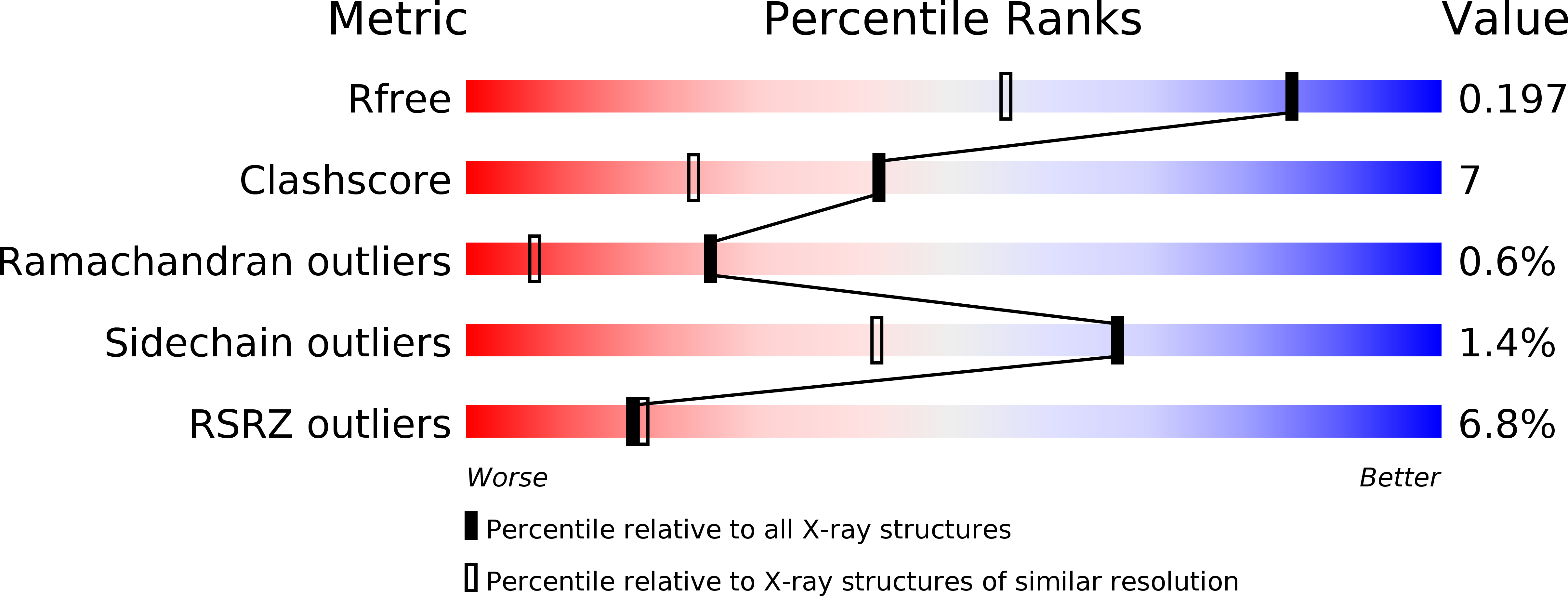
Deposition Date
2008-03-10
Release Date
2008-10-28
Last Version Date
2024-03-13
Entry Detail
PDB ID:
3CHM
Keywords:
Title:
Crystal structure of PCI domain from A. thaliana COP9 signalosome subunit 7 (CSN7)
Biological Source:
Source Organism:
Arabidopsis thaliana (Taxon ID: 3702)
Host Organism:
Method Details:
Experimental Method:
Resolution:
1.50 Å
R-Value Free:
0.19
R-Value Work:
0.16
R-Value Observed:
0.16
Space Group:
C 2 2 21


